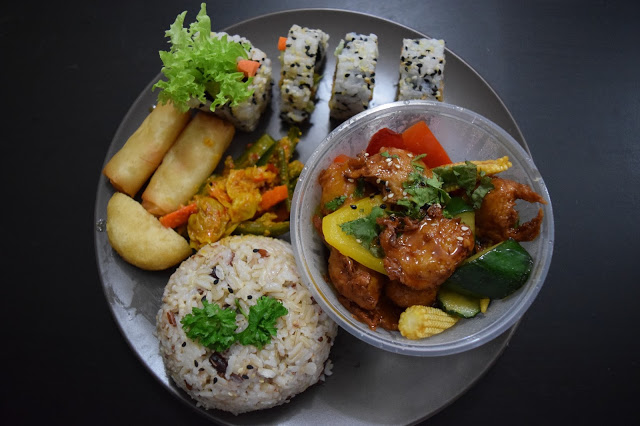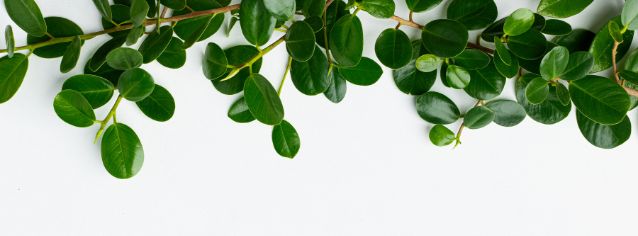Southeast Asia has a very special place in my heart because it's the place where the seeds of veganism were officially planted into my head (I saw a dead dog at the meat market :( ). I've lived in Bangkok, house sat in Chiang Mai and travelled across Cambodia, Vietnam, Malaysia, Indonesia, the Philippines, Laos, Thailand and Singapore. Whilst I'm loathe to put these unique countries with their unique histories and cultures into one box of sweeping statements, it still can't be denied: the food in Southeast Asia is incredible. Yes, even for travelling vegans.
In this (hopefully useful) guide, I'm giving a quick overview of the eight Southeast Asian countries I've personally travelled vegan in (with an invitation for you to add your own tips for Myanmar, Brunei and East Timor). As is my usual 'style', I'm laying out (pun intended?) the accidentally vegan foods of each country as well as the traditional foods of the countries and how to veganise them. Let's go vegan travel in Southeast Asia!
In this (hopefully useful) guide, I'm giving a quick overview of the eight Southeast Asian countries I've personally travelled vegan in (with an invitation for you to add your own tips for Myanmar, Brunei and East Timor). As is my usual 'style', I'm laying out (pun intended?) the accidentally vegan foods of each country as well as the traditional foods of the countries and how to veganise them. Let's go vegan travel in Southeast Asia!
1. Accidentally Vegan / Veganised Trad Southeast Asian Dishes
Vegan in Vietnam
Accidentally vegan dishes:
Traditional dishes and how to veganise them:
- Gỏi Cuốn voi Tuong Dau Phong: basically, vegetable springrolls, aka very thin rice noodles filled with veggies and served with peanut dipping sauce according to our comrade the Viet Vegan
- Buddhist Com Ga: Buddhist monks in Vietnam traditionally eat vegan food for 2 days a month, hence they have created a vegan version of 'com ga' ('chicken rice'), a Vietnamese staple... the recipe remains a secret! (okay, no it isn't)
Traditional dishes and how to veganise them:
- Bánh Bao Chay: basically steamed buns, be careful, sometimes they are vegetarian (but can be made with soy milk) and skip the meat filling (ask for tofu instead)
- Phở Chay: (it's pronounced like 'fur') which is a beautiful vegetable soup with herbs and spices... caveat emptor: traditional Phở uses animal broth and even meat! ask for vegetable broth
- Nom Du Du: which is a papaya salad (skip the fish sauce)
- Banh Mi: a remnant of the baguette left there by French imperialist colonisers, very often served with meat, egg, cheese and mayo... ask for tofu or fake meat instead!
- Banh Xeo: which are basically the Vietnamese version of crêpe (once, again colonisation) made from rice flour & coconut milk, go for the no shrimps or meat version (radishes, carrots, cucumbers, mint, cilantro, etc. mmmmmm #mouthwater)
Vegan in Singapore
Accidentally vegan dishes:
Traditional dishes and how to veganize them:
- Tau Huay: which is a beancurd made from soy beans usually served with a lot of sugar (yikes), very often with something on the side for dunking
- Kachang / Kacang: shaved ice with flavoured syrups, fruits & jelly & red beans
- Chendol / Cendol: also popular in Malaysia a sweet dish, made with coconut milk, basically jelly-like noodle made with rice flour + ice (shaved) and the above-mentioned red bean paste, corn, black grass jelly & pandan leaves.
Traditional dishes and how to veganize them:
- Roti Prata: their version of flatbread, very often serves with a curry or dahl... watch out, might contain dairy!
- Rojak: meaning 'mixed', basically an buffet-style selection mixed in with sauce, usually containing tempeh, potate and (drumroll) tofu, the Chinese version has pineapples... watch out for dairy!
- Dou Sha Bao: the classic red bean paste stuffed into Chinese-style waffles and buns yumm
- Karipap, or 'potato curry puff': might have dairy in it, is a pastry dish with big potatoe chunks in it yummy yummy carbs-heavy tho
- Popiah: their version of thin rice sheets made into fresh spring rolls with veggies (e.g. turnip, carrots, cabbage, etc.) -- ask for it without shrimp sauce!
Vegan in Thailand
Accidentally vegan dishes:
Traditional dishes and how to veganise them:
[Further reading: Easy, healthy and cheap vegan meals to make in Thailand (or abroad)]
- Khao Niaow Ma Muang, aka the classic and world-famous 'mango sticky rice': a juicy mango and sticky rice, cooked in coconut milk, usually comes with sugary-salty coconut sauce YAS QUEEN
- Khanom Krok: sweet & salty, crispy & soft pancakes made from coconut milk and rice flour mmmmm
- Tau Hu Tod: basically tofu fried in vegetable oil, then served with peanut sauce... mouthwater again, all those saturated fats
Traditional dishes and how to veganise them:
- Pad Pak Ruammit: a veggie stir-fry, many many vegan varieties out there... once again, watch out for fish / oyster sauce!
- Pad Thai: yummy noodles, ask no eggs and fish sauce (or replace the latter with a soy sauce, seaweed and mushroom infusion!)
- Som Tum: a papaya salad (ask for no shrimps!)
- Kaeng or Gaeng: thai curries, red or green, watch out for animal stock, shrimp paste and fish sauce, and even roast duck!!! (esp. in red curry)
[Further reading: Easy, healthy and cheap vegan meals to make in Thailand (or abroad)]
Vegan in Malaysia
Accidentally vegan dishes:
Traditional dishes and how to veganize them:
[Further reading: vegan Kuala Lumpur guide]
- Ondeh-Ondeh: comes from Chinese colonisation times (the other big imperialist power, not only the brits and french), the '‘baba nyonya' cuisine, basically dumplings made from rice flour with palm sugar filling... checking your insuline levels already? check out this documentary before you binge on these
- Cham-O: a mixture of black coffee and black tea, sweetened (the 'O' means no milk plz), if that's your kind of thing (we've already come off refined sugar and caffeine recently and oh boy life is different like this)
- Chee Cheong Fun: though its literal meaning is 'the bowels of a pig' (lol), they are basically steamed rice noodles with black sesame seeds and tim cheong sweet sauce, I can feel that jesus sugar high already (and then the insuline crash)
- Achar: goes well with Nasi Lemak mentioned below, a pickled condiment made from cucumber, chili, onions and sometimes, once again, cucumbers
- Thosai: a thin pancake served with a spicy chutney and vegetables mixed with chili & mustards seeds, come on....
- Durian: Malaysia's national tropical fruit
- Tahu Sumbat: aka 'stuffed tofu', which is a street food: tofu cubes fried in vegetable oil, then stuffed with cucumber, beans & chilli
- Nasi Campur: aka 'mixed rice', usually eaten in buffet-restaurants... pick what you want!
Traditional dishes and how to veganize them:
- Laksa: which is a noodle soup with spiced broth & tofu & aubergines & herbs and chilli ohhh.... watch out for the meaty-dairy versions, look for a vegan/vegetarian place to have one!
- Nasi Lemak: served with cucumbers and peanuts (skip the fried fish), this is basically rice cooked in coconut milk
[Further reading: vegan Kuala Lumpur guide]
Vegan in Indonesia
Accidentally vegan dishes:
Traditional dishes and how to veganize them:
[Further reading: 10 reasons to visit Bali]
- Tempeh and tofu: both are 100% vegan, both are made from soybeans. Tempeh is a fermented product (it is alive!!!) and it actually originates from Indonesia - is very often eaten as street food, roasted ('tempeh satay')
- Urap-Urap: which is a salad made of steamed vegetables, grated coconut with spices is mixed in, usually eaten with rice
- Capcay: which is basically a stir-fry made from veggies like: carrot, leeks, napa cabbage & a good dash of soy sauce. This dish originates from China.
Traditional dishes and how to veganize them:
- Gado Gado: watch out for & shrimp paste and eggs, otherwise a wonderful dish made of peanut sauce, potatoes, tempeh & tofu, rice cakes and of course, a lot of boild / steamed veg! yumm
- Kari / kare, i.e Indonesian curry: there are veggie versions, the spectrum of spiciness is: the more yellow the more mild, greener means hot!
[Further reading: 10 reasons to visit Bali]
Vegan in the Philippines
Accidentally vegan dishes:
Traditional dishes and how to veganize them:
- Puto: sweet & salty steamed cakes made from rice thas was fermented, also sometimes coloured with purple yam or pandan (or some other natural ingredient).
- Ginataang bilo-bilo: made from rice balls, taro, sweet potatoes, bananas, jackfruit tapioca and coconut milk, often served hot.
- Ginataang langka: take some coconut milk, an unripe jackfruit, then let the latter it simmer in it …. mmmm
- Laing: once again, some coconut milk, throw in some taro leaves simmer – done!
- Douhua: which is a version of silken tofu, well-known in all of SE Asia.
- Taho: douhua plus arnibal (brown sugar syrup, jeeesh) and tapioca, often eaten as a light (not on sugars tho…) breakfast / snack in the afternoon.
- Banana cue: plantain bananas that are deep-fried and then coated with caramelised sugar (usually brown), sugar bomb no. x
- Turon: basically, take the aforementioned banana cue + some jackfruit, wrap it in a spring roll, then deep-fry it so you get your arteries clogged up well, mmmm delicious
- Kamote cue: similar to the previous ones: sweet potatoes, deep-fried.
- Buko: juice from fresh coconuts, booths, stalls or stands are found everywhere on the streets!
- Minatamis na bao: basically a coconut jam or spread that you can purchase in a store, even.
- Mani: peanut snacks that can be bought on the street.
Traditional dishes and how to veganize them:
- Suman: also a cake made of rice, this time wrapped in banana leaves – watch out, sometimes milk / cheese is added!
- Adobo: which is one of the famous national dishes which is totally not vegan (vinegar, soy sauce, pepper, garlic and other spices plus chicken, pork and seafood). Vegan versions are sometimes available, ask for long green beans (adobong sitaw) and mock meat or tofu (adobong tokwa).
- Mais: street food, steamed corn snacks, margarine and salt added for your good health – watch out for cheese powder!
- Binatog: grated coconut plus once again, steamed corn – watch out for added butter!
[Further reading: vegan in the Philippines]
Vegan in Cambodia
Accidentally vegan dishes:
Traditional dishes and how to veganize them:
[Further reading: the ultimate guide to visiting Angkor Wat]
- Nom korng: okay, so sugar bomb again, made from rice flour + sesame seeds + caramellized (unfortunately, very often palm) sugar coating jeesuuuus
- Nom akor: rice flour, sugar, yeast + sometimes palm fruit made into a sweet-sour cake!
- Nom pla-aye: with some palm sugar in the middle, this is basically a dumpling made from rice flour, cooked in boiling water.
- Nom an som ang: which is basically sticky rice with a banana core, cooked in a banana leaf!
- Nom groy: take, dough made from rice flour, fill it with yellow bean paste (which is sweet), then top it off with sesame seeds!
- Nom kom: which is, once again, dough made from rice flour, once again, filled with yellow bean paste and then wrapped in banana leaves!
- Nom heng: their version of pita bread (made from rice flour…’nom’ means rice, as you might’ve guessed by now :) + deep-fried sesame seeds!
- Nom gkow: take some coconut milk plus rice flour and then some sugar (how’s that for carbs?), steam’em in banan leaves and top’em off with jackfruit… sugar grenade!
- Nom cjack gajan: okay, so this is a layered thing: layers of coconut milk and rice flour with added sugar + pandan (srewpine) for flavour!
- Son da-i di sngyow: peanuts steamed in their shells, yumm!!! (way healthier than the salted version that is popular in the west, very often fried in palm oil... peanuts contain plenty of natural oils, there's no need for any extra!)
- Krolan: take a stick of bamboo, fill it with coconut shreddings, rice and beans, then cook it... wonderful and nutritious!
- Dumlowng: sweet potatoes (sometimes purple), steamed, not deep-fried!
- Chjake chung dumlowng chung: bananas & sweet potatos together with coconut & caramel coating (palm sugar, of course)
Traditional dishes and how to veganize them:
- Nom ga chai: take some rice flour, make it into a dough, fill it with chives, then fry it in an ocean of oil – chilli sauce is supposed to come in the end, watch out for added fish sauce!
- Chjake jeun: which are basically fritters made of banana, but watch out: the batter could have egg in it (ask)
- Amok: This is a reknown traditional dish, basically a curry made with fish and coconut milk – some places have a 100% vegetable & fungi version with shrooms (not that kind) and/or tofu!
[Further reading: the ultimate guide to visiting Angkor Wat]
2. Vegan Eco-travel in Southeast Asia
Nowadays many people are switching to veganism simply because it's one of the biggest ways to reduce your carbon footprint, at least as individuals, and it's easier than ever to do. In my humble opinion, veganism goes hand in hand with eco-ism, you simply can't have one without the other. (Full rant here, short version: if caring about animals is the only reason you're vegan, think for a second where said animals live.) Anyway, if you're travelling as a vegan to Southeast Asia it's important to keep these eco-tips in mind:
Avoid plastic
Avoiding plastic in Southeast Asia is unfortunately harder than avoid plastic in say Europe. Last time I was there the trend was to by a drink in a single-use plastic cup with a single-use plastic straw and put it in a single-use plastic bag made just for cups (so your hands don't get cold)... It's especially f-ed up when you consider Southeast Asia has to deal with much of the plastic that's 'recycled' in Europe and North America, as well as their own. Put simply, it's your duty to say no to the plastics, at the very least the one-use ones. Carrying reusable bags and a reusable water bottle are a good place to start, and if you want to enjoy the above foods as street foods (which I recommend so so highly), you could, nay should, carry reusable cutlery/chop sticks and a bowl/plate - you can pick up really cute ones made from coconuts for as little as a dollar over there.
Take buses and coaches over flying
You can go green (er) by purchasing your tickets online with 12goAsia. Taking a bus or a coach for long distant travel in Southeast Asia is easier than ever cause you can book your tickets online. Of course, coaches and buses do have their own carbon footprints but it's nothing compared to what many visitors to Southeast Asia do: fly.
Additionally, taking the coach/bus is a great way to see the 'real' Southeast Asia - this means live pigs tied to motorbikes, chickens and ducks in cages, and worse - don't have your head in the clouds (literally), be on the ground and remember why being vegan is so important.
3. Wrap Up: Vegan Travel in Southeast Asia
Thank you so much for reading this post or scrolling down to here, I sincerely hope it's been helpful. If you're interested in more of my Asian Vegan guides you might want to check out our Vegan in Dubai guide and our Vegan in Tokyo guide. If you are interested in our other adventures in Southeast Asia, here's a compilation of the vlogs we made during our stay there - enjoy :)
Note: At the time of shooting the above video, we were not vegan yet (and also not really aware of our Western white middle class privileges as travel bloggers). The former change happened first, I wrote a blogpost about how travelling made me vegan, in case you're interested.















